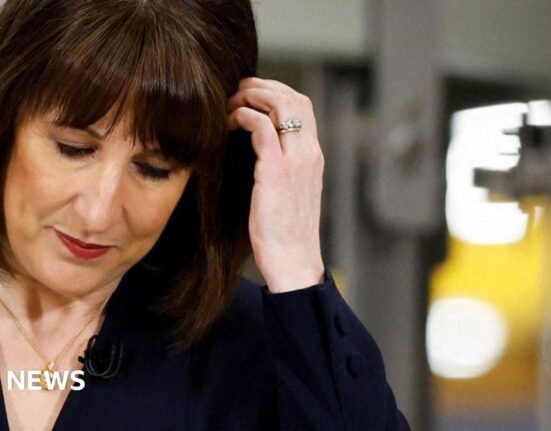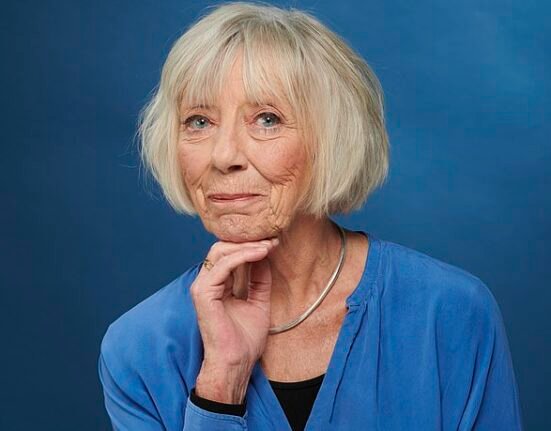By Brad Young, Money feature writer
Higher taxes, smaller pensions, weaker public services, an older retirement age and more potholes – it sounds like the manifesto of a party without a chance of making it to office.
But as Britons have fewer and fewer children, these are economic policies they’re unwittingly voting for, according to experts.
“If we’re not procreating, then there’s nobody to pay taxes, so it’s a ticking timebomb,” said Joeli Brearley, founder of mums’ advocacy group Pregnant Then Screwed.
The latest figures show the average number of children born to a woman in England and Wales over her lifetime dropped to 1.44 in 2023, the lowest level since records began in 1938, according to the Office for National Statistics.
This measurement is known as the fertility rate. To put it in perspective, a rate of 2.1 is needed to sustain the population level without immigration.
There appear to be two trends driving the decline: a growing minority of young people who don’t want children and an economy punishing the majority who do.
Here we investigate the causes and consequences of Britain’s shrinking families.
British fertility peaked at 2.93 in 1964 and has declined ever since.
Now we’re feeling the effects, said Matthias Doepke, professor of economics at LSE.
The proportion of Britons who work and pay taxes is shrinking while the proportion of retired people taking out of the public purse is growing, putting a strain on public finances, he said.
“Expenses for pensions are rising, expenses for healthcare are rising,” he said, adding it was no coincidence that after decades of declining fertility, taxation is at an all-time high.
Less and less money is available for other public services, like fixing potholes, reducing NHS waiting lists or building infrastructure, he said.
Younger people are losing more and more power over how the government spends their taxes, added Mary-Ann Stephenson, director of the economics thinktank UK Women’s Budget Group (WBG).
“You get this sort of perverse incentive, which is that there’s a lot more older people so they’re a much more important voting block, but they’re not earning money, they’re not paying taxes.”
But even with more political weight, retirees face less generous state pensions if there simply aren’t enough workers to pay for it.
And it is “almost inevitable” that the retirement age will rise to slow the rate at which the public purse shrinks, Doeke said.
Simply put: today’s workers can expect to work longer and receive a smaller pension than their parents.
‘The world is f***ed’
To hear the experts describe it, the stakes are exceedingly high. Yet a growing number of young people do not want children.
Approximately 15% of Gen Z adults aged 18-25 say they definitely will not have them, according to the Centre for Population Change.
This is up from 5 -10% of millennials surveyed at the same age between 2005 and 2007.
“People are realising it’s not the only way you can feel accomplished in life,” said Adwoa Amankwah, 23, a midwifery assistant from Manchester who has never felt a desire to have children of her own.
“Especially women nowadays – I have a lot of friends around me who don’t feel the need to have kids.”
Ms Amankwah said the cost of raising children and the challenge of finding a partner who would make a good role model has made it less likely she will change her mind.
“Looking after yourself in this economy is so difficult. I’ve got two cats and I cannot imagine looking after another human being. It’s just insane.”
Each generation of Britons has gained more freedom over whether or not to have children, said Ruby Warrington, author of Women Without Kids.
Baby boomers, born 1946-64, broke free of the idea they were duty-bound to marry young and have a family, she said.
Gen Xers like herself, born 1965-79, grew up with the message “you can do what you want with your life” and the means to act on it, like effective contraception and legal abortion.
“The message that Generation Z are growing up with is ‘the world is f****ed’,” Warrington said.
“I think it’s overlooked, but from a very young age [they] have absorbed messages from the culture that the climate is on fire.”
She continued: “I think these sorts of messages are really impacting procreative choices and decisions in people 25 and under.”
‘Childcare crisis’
Still, the vast majority of people want children.
The problem is economic headwinds have compelled many to abandon plans to start a family or have more than one child, said Stephenson, of the Women’s Budget Group.
Chief among them is the cost of childcare.
The average price of a part-time nursery place for a child under two years old was £7,596 a year in March 2024, according to a Coram survey, rising to £14,501 for a full-time place.
To buy a year of childcare for three children – the size of the average family when Britain recorded its highest fertility rate in 1964 – parents faced a £43,503 bill.
That’s 16% more than the average worker’s entire pre-tax salary, £37,430.
“So it’s not surprising that people are having fewer children,” said Ms Stephenson.
Emily Steele, 27, from Birmingham, always planned to have three children, even buying a three-bed home in anticipation.
She and her partner Brian met with fertility complications, but that didn’t stop them – what dashed their plans was the £13,000 annual cost of sending their first and only child, Penny, to nursery.
The couple, who used IVF, froze two extra embryos to give Penny siblings. Now they face a choice between destroying them or putting the family in a “very unfeasible” financial position.
“I feel like they’re my children,” she said.
“It’s very much a torn decision: Do we get rid of them completely and never have the chance?
“Or do we make it difficult for ourselves financially and have another baby, but we would be living pay cheque to pay cheque and worrying?”
It’s the type of choice faced by thousands of women. In a Pregnant Then Screwed (PTS) survey of 5,900 women who had abortions, 52% said the cost of childcare was the primary reason.
The latest government statistics show the number of abortions in England and Wales was 251,377 in 2022, a 17% increase on 2021.
“For women who feel forced to have an abortion because the figures don’t add up, the result is devastating and really traumatic,” PTS’s Brearley said.
“I’ve spoken to women who are hysterical in tears, who are really traumatised by what they’re having to go through to survive.”
“That’s very new, actually,” she added.
“It feels that the childcare crisis is really biting and that’s the impact.”
Since September, the government has offered 15 hours free childcare a week to parents of children aged nine months to four years. This will increase to 30 hours next September.
There is not yet any data available on the impact.
Steele, whose daughter is two, saw her bill fall to £7,000 a year, but she said it’s still too much to afford more children.
Parental leave, debt and matriarchy
Limited maternity and paternity rights mean parents are struggling before they even need childcare, according to Brearley.
A study by the International Network on Leave Policies and Research (INLPR) in 2021 found the UK had the least generous parental leave in Europe.
Fathers are legally entitled to two weeks’ paid leave at a rate of £184 a week (half the national living wage) or 90% of their salary, whichever is lower.
Mothers are entitled to 52 weeks of maternity leave: 39 weeks paid at the same rate as men and 13 weeks unpaid.
“The lion’s share of families are digging into savings or credit cards or borrowing money in order to get through those first few months,” said Brearley.
A PTS survey found 76% of mothers relied on debt or withdrew money from their savings due to low maternity pay.
After the INLPR study, co-editor and UCL professor of early childhood provision Peter Moss wrote that British policy was “implicitly matriarchal, eschewing gender equality for the idea that women should be the main carers of young children”.
Brearley said: “I think they’re just not willing to do that like we were: women are more savvy, more ambitious, are thinking ‘I want to progress further in my career before I take a hit’.
“Then, of course, your fertility can drop off a cliff and it becomes too late to have children.”
No room for a family
Parental leave is not the only factor incentivising women to have children later in life, according to Stephenson.
“One of the biggest things is earnings aren’t keeping up with the cost of housing.”
The average one-bedroom home in England costs 47% of women’s median earnings, up from 36% last year, according to WBG’s analysis in October.
Anything over 30% is considered unaffordable by the Office for National Statistics.
This has pushed back the age at which it makes most economic sense for a woman to have children into her late 30s, years after peak fertility, said Stephenson.
Austerity
Analysis carried out by the Centre for Progressive Policy thinktank found austerity has been a “primary driver” behind falling fertility rates since 2010.
From the year the Conservatives came to power until 2022, the fertility rate fell faster than any other G7 country.
The thinktank surveyed local authorities and found areas of higher deprivation experienced a 10% faster decline than affluent areas.
“That actually bucks a trend,” said chief executive Ben Franklin, explaining that higher wealth and education typically correlated with lower fertility rates in the past.
He said the cost of having children was “made significantly higher as a result of cuts to social expenditure, social security, welfare [and] to things like Sure Start programmes”.
Sure Start refers to parenting support hubs introduced by Labour in 1999. Their budgets were slashed by two-thirds between 2010 and 2021, according to the Institute for Fiscal Studies.
Depopulation
If the fertility rate continues its downward trajectory, the UK faces population decline, warned Doepke.
Workers would gravitate to cities, leaving some villages and towns without services like they have done in Japan, where the fertility rate is approximately 1.26.
“In Tokyo, things are as crowded and busy as ever, but the Japanese countryside is emptying out,” he said.
“It means that property values there are collapsing – nobody wants to buy a house in a village that’s disappearing.”
Neighbouring South Korea has the worst fertility rate in the world, 0.72 in 2023, and is approximately two decades ahead of the UK on its current trajectory.
Professor Sojung Lim, director of the Yun Kim Population Research Laboratory, said the UK shares the problems that precipitated South Korea’s record low fertility: deteriorating economic conditions, rocketing house prices, inflexible workplace culture, long working hours and policies against working from home, to name a few.
Both nations’ economies, and other heavily deregulated capitalist economies across the world, have made life more “flexible” for employers by making it more precarious and unstable for employees, she said.
“People have a hard time predicting and planning their life. That is one of the fundamental issues that our world is dealing with.”
The global fertility rate more than halved from 5.0 to 2.2 between 1950 and 2021, with more than half of countries below the population replacement level, according to a study published in the Lancet in May.
The research, funded by the Bill & Melinda Gates Foundation, predicts the number of countries in the entire world with a sustainable fertility rate will plummet to just six by 2100.
“The rate and magnitude of changes in terms of fertility decline might be too fast and too big for an individual society to deal with, so I hope we’re going to have some sort of consensus,” Lim said.
“We need a collective effort. If you miss good timing, it might be really hard to reverse the trend.”







